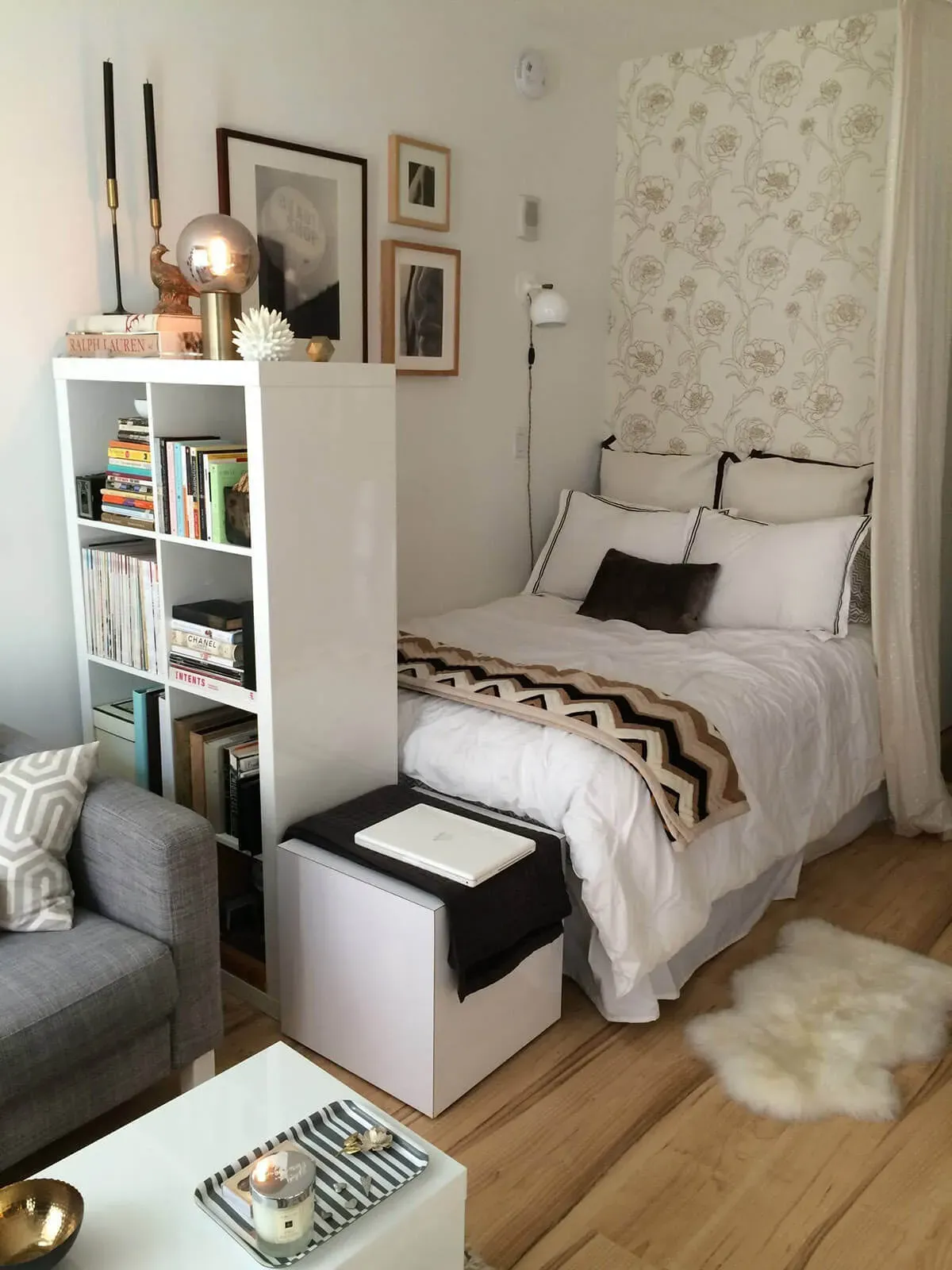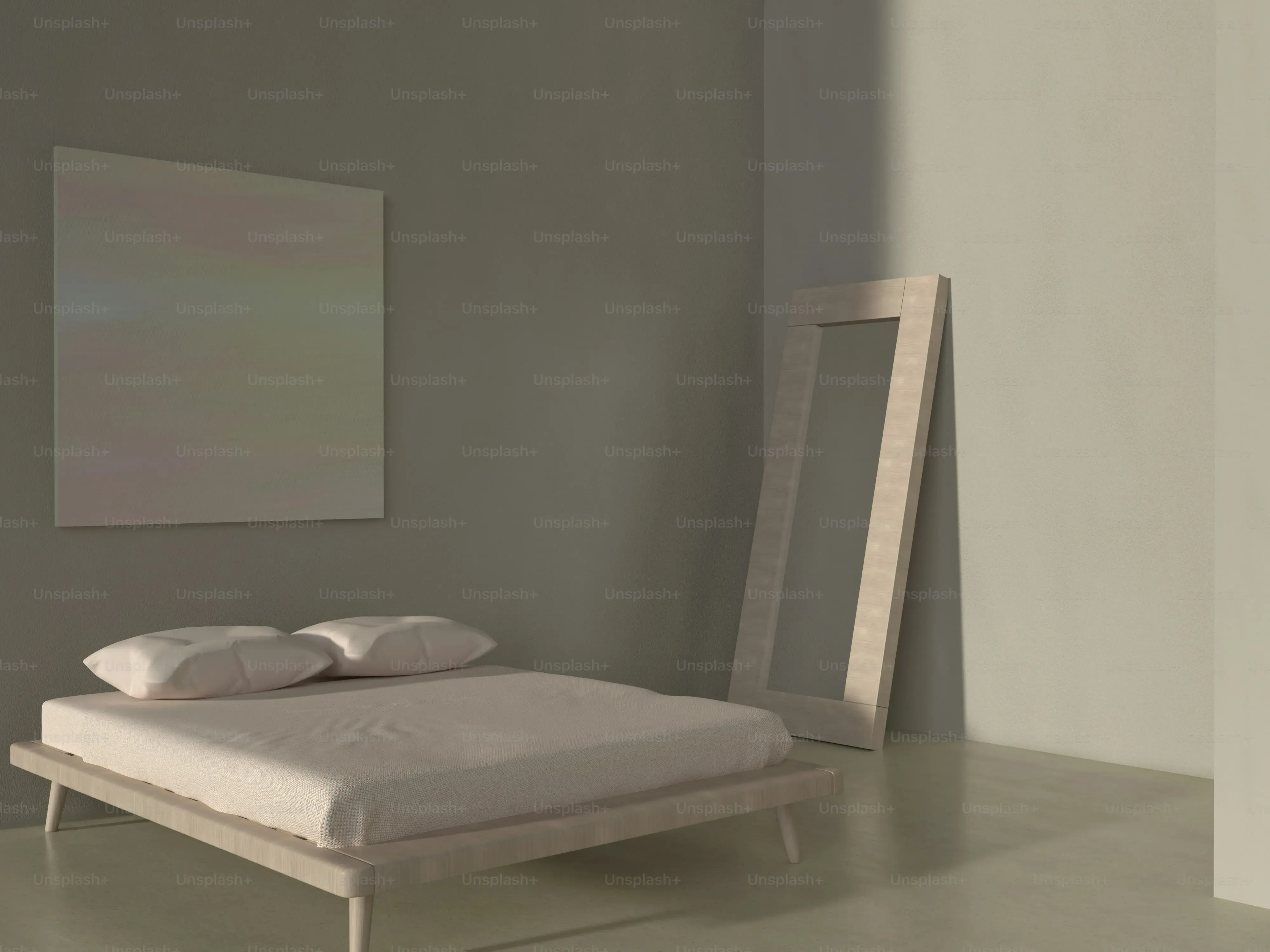Table of Contents
Let's face it, not everyone lives in a sprawling mansion with bedrooms the size of a small apartment. More often than not, you're staring down a compact space wondering how on earth you'll fit a bed, let alone a dresser, without feeling like you're sleeping in a furniture storage unit. This is where smartbedroom furniture ideas for small roomscome into play. It's not just about cramming stuff in; it's about making deliberate choices that maximize every square inch and actually make your room feel bigger and more functional.
Tackling the Tight Squeeze: Planning Your Small Bedroom Layout
Tackling the Tight Squeeze: Planning Your Small Bedroom Layout
Why Your Current Layout Feels Like a Bad Joke
You walk into your small bedroom, and it just… sits there. A box. Maybe there’s a window, a door that swings in the most inconvenient direction possible, and a closet that seems to shrink every time you open it. You’ve probably shoved the bed against one wall, perhaps tried angling it dramatically, and yet, it still feels like the furniture is actively plotting against you, leaving no room to breathe or even find matching socks without tripping over something. This isn't bad luck; it's usually a lack of deliberate planning. Simply buying small-scale furniture isn't enough if you haven't first figured out how traffic flows, where light comes from, and what you actually *do* in the room besides sleep (hopefully).
So How Do We Actually Plan?
Alright, let's get down to it. Before you even think about buying a new nightstand that claims to levitate (it won't), you need a map. Grab a tape measure – a real one, not just guessing – and measure everything. Get the length and width of the room, obviously, but also the height. Note where windows and doors are, including how far they are from corners and, crucially, which way the doors swing. Measure radiators, built-in closets, electrical outlets, and any other fixed obstacle or feature. Sketch it out, even on a napkin if that's all you've got. Knowing these dimensions and limitations is the absolute non-negotiable first step before you waste money on a piece that just won't fit, no matter how much you want it to.
So, what are the absolute must-get measurements before you move anything?
- Total room length and width
- Ceiling height
- Width and height of windows and doors
- Distance from corners to windows and doors
- Direction of door swings
- Location and size of radiators or vents
- Location of electrical outlets
Smart Bedroom Furniture Ideas for Small Rooms: Beds, Desks, and More
Smart Bedroom Furniture Ideas for Small Rooms: Beds, Desks, and More
Your Bed Doesn't Have to Be a Space Hog
the bed. It's usually the biggest thing in the room, the necessary evil that eats up prime real estate. But it doesn't have to be just a place to crash. When you're looking forbedroom furniture ideas for small rooms, the bed is your first battleground. Think vertical or think hidden. A captain's bed, for instance, isn't just for kids anymore; the drawers underneath are lifesavers for clothes, linens, or anything else you need to stash out of sight. Loft beds aren't just for dorm rooms either; they free up the entire floor space below for a desk, a small seating area, or even just room to do jumping jacks if that's your thing.
Then there are Murphy beds. Yeah, the kind that fold into the wall. They require a bit more commitment (and wall space), but imagine having a bedroom that transforms into a home office or a yoga studio during the day. It's like getting two rooms for the price of one. We had a client who installed one, and suddenly her tiny studio apartment felt twice as large. It wasn't magic; it was just smart use of vertical space.
Desks and Nightstands That Pull Double Duty
Now, let's talk about surfaces. You need somewhere to put your lamp, your book, your phone, maybe even a place to occasionally work from home without balancing your laptop on your knees. Standard nightstands and desks can feel bulky. This is where multi-functional pieces shine. A floating shelf mounted beside the bed can serve as a minimalist nightstand, leaving floor space open. A narrow console table can work as both a desk and a vanity. Look for furniture that isn't just one thing.
Some desks fold up into the wall, similar to a Murphy bed. Others are built into shelving units. The key is finding items that serve at least two purposes. Does your nightstand have drawers? Can your desk also store your books? Every piece of furniture in a small room needs to justify its existence by offering more than just one function. Otherwise, it's just clutter waiting to happen.
- Platform bed with under-bed storage
- Loft bed with space for a desk or seating below
- Murphy bed that folds into the wall or a cabinet
- Narrow console table as a desk/vanity
- Floating shelves as nightstands
- Desk integrated into a shelving unit
- Ottoman with storage that serves as seating or a footrest
Don't Forget the Unsung Heroes: Dressers and Chairs
Dressers and chairs are often afterthoughts, but they can be major space culprits. A wide, low dresser might fit under a window, but it takes up a lot of horizontal space. Consider tall, narrow dressers or chest of drawers instead. They draw the eye upwards and take up a smaller footprint. And for chairs? Do you really need a full-sized armchair? Maybe a small stool that tucks away when not in use is better, or a bench at the foot of the bed that also offers storage.
Every piece needs to be scrutinized. Does that accent chair actually get used, or is it just a fancy laundry pile holder? If it's the latter, maybe it's time for it to find a new home. Prioritize function and scale. Look for pieces with clean lines and minimal bulk. The goal is to make the room feel easy to move around in, not like an obstacle course of bulky furniture.
Storage Solutions That Don't Eat Up Space
Storage Solutions That Don't Eat Up Space
Storage Solutions That Don't Eat Up Space
so you've tackled the big furniture pieces and hopefully found some multi-tasking wonders. But what about all the *stuff*? Clothes, books, random gadgets, the junk drawer contents that somehow multiply overnight. In a small room, clutter is the enemy, making the space feel even more cramped. The trick here is thinking vertically and often, invisibly. We're talking aboutbedroom furniture ideas for small roomsthat incorporate storage seamlessly, not just adding more bins on the floor. Think under the bed, behind the door, and high up on the walls. Every unused nook and cranny is potential storage real estate just waiting to be exploited.
The Illusion of More Room: Decor and Lighting Tricks
The Illusion of More Room: Decor and Lighting Tricks
Paint Colors and Reflective Surfaces: Your Best Friends
let's talk visuals. Paint color is probably the cheapest trick in the book, but it works. Dark, moody colors might feel cozy in a huge room, but in a small one, they just make the walls feel like they're closing in. Stick to lighter shades. Think soft whites, pale grays, or light blues and greens. These colors reflect light, making the room feel airier and more open. Painting the ceiling a slightly lighter shade than the walls can also create a sense of height.
But the real magic? Mirrors. Seriously, strategically placed mirrors are like instant square footage. A large mirror leaning against a wall, or a collection of smaller mirrors, reflects the room and the light, fooling your eye into thinking the space extends beyond the physical walls. Placing a mirror opposite a window is particularly effective, bouncing natural light deeper into the room. It's not rocket science, but it's surprisingly effective.
Lighting is Everything: Brighten Up Your Life (and Room)
Good lighting can completely change the perception of a space. Relying on a single overhead light fixture in a small room often creates harsh shadows and highlights the cramped nature of the space. You need layers of light. Maximize natural light first – keep curtains pulled back during the day, use sheer fabrics if you need privacy, and keep window sills clear.
For artificial light, think about varying sources. Wall-mounted sconces free up precious floor or surface space compared to floor or table lamps. Consider task lighting by the bed for reading and ambient lighting from a small ceiling fixture or track lighting. Uplighting, where light is directed upwards towards the ceiling, can also make the room feel taller. Dimmers are your friend, allowing you to adjust the mood and brightness.
What's the most overlooked lighting trick for a small room?
Smart Decor Choices: Less is Definitely More
Finally, the finishing touches. This is where many people mess up, adding too many small items that create visual clutter. In a small room, every decorative item needs to earn its place. Instead of a gallery wall of tiny pictures, opt for one or two larger pieces of art. A single, impactful piece can draw the eye and add personality without making the wall feel busy.
Choose textiles carefully. While layering textures can add warmth, too many busy patterns can feel overwhelming. Use a consistent color palette with pops of accent color. Keep decorative pillows and throws to a minimum – just enough to feel cozy, not buried. And for the love of all that is holy, manage clutter ruthlessly. A small room with stuff piled everywhere will always feel smaller and more stressful than it is. Everything needs a home, preferably hidden away in one of those clever storage solutions we talked about.
Making Your Small Bedroom Work, Not Just Fit
So there you have it. Dealing with a small bedroom doesn't have to mean sacrificing comfort or style. By thinking vertically, choosing multi-functional pieces, and being strategic about your layout, you can create a space that feels larger and serves your needs. It requires a bit more planning than a big room, sure, but the payoff is a bedroom that feels less like a storage locker and more like a place you actually want to relax in. It's about making smart choices, not just filling space. Take a look at your room with fresh eyes and see which of these bedroom furniture ideas for small rooms might just solve your particular puzzle.
